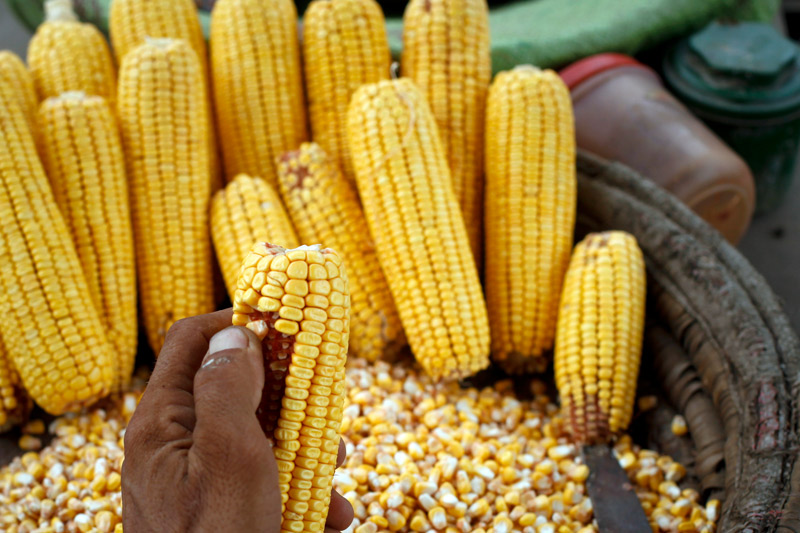Investing.com - U.S. corn rose for the fifth consecutive session on Thursday to trade at the highest level in more than two months, as prices were boosted by bullish chart signals.
On the Chicago Mercantile Exchange, US corn for May delivery touched an intraday peak of $3.9700 a bushel, the most since January 13, before trading at $3.9638 during U.S. morning hours, up 0.97 cents, or 0.25%.
A day earlier, US corn for May delivery inched up 1.6 cents, or 0.45%, to end at $3.9500.
Corn is up more than 5% in the four sessions leading up to Thursday, as a bout of technical buying kicked in after futures broke above key moving-averages.
Meanwhile, US wheat for May delivery tacked on 4.88 cents, or 0.94%, to trade at $5.2388 a bushel.
On Wednesday, wheat declined 4.4 cents, or 0.86%, to settle at $5.1900 amid easing concerns over winter-wheat crop conditions in the U.S.
According to the U.S. Department of Agriculture, Oklahoma winter wheat was rated 44% good to excellent as of last week, up from 40% in the previous week, while Texas winter wheat improved by 4% to 55%.
In Kansas, the top wheat-producing state, the wheat crop was rated 41% good to excellent, unchanged from the preceding week.
Elsewhere on the Chicago Board of Trade, US soybeans for May delivery advanced 1.38 cents, or 0.14%, to trade at $9.8038 a bushel. US soybeans for May delivery dipped 3.0 cents, or 0.31%, on Wednesday to close at $9.7860.
Optimism over the outlook for supplies in Brazil and Argentina combined with indications over a slowdown in demand for U.S. soybeans have weighed on prices in recent weeks.
Brazil and Argentina are major soybean exporters and compete with the U.S. for business on the global market. Large South American crop prospects could weigh on demand for U.S. supplies.
Meanwhile, the U.S. dollar index, which measures the greenback’s strength against a trade-weighted basket of six major currencies, was down 0.7% to 96.40 early on Thursday.
A weaker dollar increases the appeal of U.S. crops to overseas buyers and makes commodities more attractive as an alternative investment.
The greenback remained under pressure as a recent soft patch of U.S. economic data added to uncertainty over the timing of a future interest rate hike.
Corn is the biggest U.S. crop, followed by soybeans, government figures show. Wheat was fourth, behind hay.
